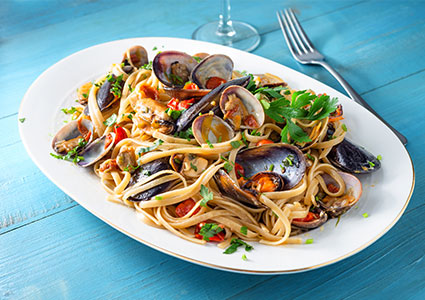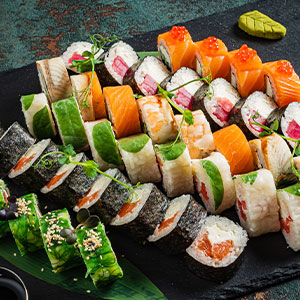From chef to CEO: Matthew King talks Legal Sea Foods’ commitment to quality
Matthew King is a trained chef. But he’s also President & CEO at Legal Sea Foods. The two, we found out in a recent interview are not mutually exclusive.
“I began my career as a chef working through restaurants, hotels, country clubs, and sports venues,” Matthew, or Matt as he introduces himself, begins. “You name the venue; I’ve probably worked in the kitchen.
“I’ve worked in Boston, Florida, and New York,” he goes on. “Oh, and Ireland! Can’t forget a place like that! Eventually, I became head chef for two different restaurants, one of which was a steakhouse – I was enjoying life, and eventually landed at Smith & Wollensky, working my way to VP of Culinary. Then a series of acquisitions by PPX Hospitality Brands (PPX), our parent company, meant there was a new position opening as Chief Culinary Officer.”
PPX didn’t stop growing. It soon acquired Legal Sea Foods, a company that started out as a family fish market in Inman Square but has since transformed into a famous seafood destination with more than 25 locations along the Eastern Seaboard.
Post-acquisition, Matt took over as Chief Culinary Officer, which transpired to be a temporary position, because at the beginning of this year, he transitioned into the role of President & COO of Legal Sea Foods.
Menu development
 One would think that’s a far cry from being involved in the culinary underbelly of New York. However, for Matt at least, it’s not as clear cut as it might initially seem.
One would think that’s a far cry from being involved in the culinary underbelly of New York. However, for Matt at least, it’s not as clear cut as it might initially seem.
“I’ve thought about this a lot over the years,” he says. “As the number of restaurants for which I was Chief Culinary Officer grew, obviously the less time I got to spend in the kitchen.
“Hands-on cutting, dicing, and frying naturally evolved into eyes-on managerial duties and planning. It was necessary to adopt a more strategic approach to take the business forward. When you end up with a portfolio of 30-plus restaurants, you simply don’t have time to be standing on the line cooking.”
Nevertheless, Matt keeps his hand in by curating culinary programs for all PPX’s brands. “I’m fortunate that I have a fantastic culinary director, with whom I’ve worked for many years,” he reveals.
“We favor a collaborative approach, so today, for instance, after we finish talking, I’m going to head to our test kitchen so we can cook together. These days are super fun when they come around.
“It’s all about coming up with the next big idea for the brand,” he adds. “It starts with the season we are heading into because that’ll ultimately dictate what fish is going to be available.
“We’ll experiment with different produce, go through our ideas, and try different samples to formulate some kind of plan for a new menu. Trends – such as different vinegars or flavor profiles or, say, a certain influence like Greek or Moroccan – will play a big part.”
It sounds like fun, but it is hard work. Matt admits that for every ten samples he and his director produce, at least eight of them won’t make the cut.
The best ingredients
So, despite his strategic role, Matt still indulges in his true love: cooking. “I’ve had people come up to me and say: ‘You know, it’s really strange that a chef is the president of a company,’ and I always feel inclined to point out that, when you boil it down, there’s no one better,” he asserts. 
“What do restaurants serve? Food! So, for me, it makes sense that a chef – someone who knows the business from the inside out – is at the top calling the shots.”
You can’t fault the logic. Talking of seeing the business from the inside out, we’re keen to learn more about Legal Sea Foods and its portfolio.
Fortunately, Matt’s happy to talk us through its history. “Legal Sea Foods began some 50 years ago – but not as a restaurant group,” he reveals. “The company began as a fish market in Cambridge, Boston.
“Now, however, we’re opening our 27th restaurant. So, it’s safe to say the business has seen incredible growth! Our portfolio is, as you might expect, a collection of seafood-focused restaurants; menu items are largely seafood, and we try to use locally caught fish.
“Otherwise,” he goes on, “we import salmon from the Isle of Skye in Scotland and tuna from across the globe; we like to track down the very best.
“But for less migratory fish, we support our local New England fishermen. Haddock, pollock, cod, oysters, clams, and more – all of these will come from local sources. It’s certainly a broad scope of product and so much of it is available online via our new e-commerce store – shop.legalseafoods.com.”
Focus on quality
A broad scope of fresh seafood isn’t the only key differentiator that’s setting Legal Sea Foods apart from other fish-based restaurants. As Matt informs us, innovation and constant menu development elevate the business to a whole new level.
“We’ve just recently expanded our sushi and sake program, which we think will help us attract both a wider and more engaged audience,” he says. “We feel like it’s very on-brand; sushi is growing in popularity ever year, and the public is demanding it!
“And think about it: there’s nowhere better to eat raw fish. If you’re going out for sushi, then you will want to go somewhere that you can trust with your seafood. Who better than us?
“Another key differentiator, I’d say, is our commitment to quality,” Matt concludes. “With more than 50 years under our belt, you might think that our commitment has dipped – but that’s not the case and we’re really proud of that.
“For instance, we quality commission and we do lots of our own laboratory testing on seafood, such as oysters. It’s not a required step – we just do it because we care. We’re committed to always serving the freshest, safest, and most sustainable seafood.”
